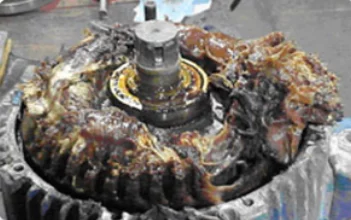Root Cause Analysis Examples
In the realm of maintenance and reliability, understanding the root cause of problems is pivotal. At IDCON, we’ve mastered the art of dissecting complex issues, offering you a glimpse into our proven methods through real-life root cause analysis examples. This journey will not only enlighten but also empower you to take control of your plant’s reliability and efficiency.
What is Root Cause Analysis?
Root Cause Analysis (RCA) is a systematic approach used to identify the underlying reasons for faults or problems. At its core, RCA aims to address the primary cause of a problem rather than its symptoms, ensuring a long-lasting solution. This methodology is integral to improving plant reliability and reducing downtime.
Root Cause Analysis Example 1: Navigating Technical and Human Challenges
A client approached us with a recurring issue of frequent bearing failures in their AC motors. To tackle this, we focused on one motor for a thorough investigation, gathering evidence and historical data.

The technical aspect of the problem was straightforward – excessive lubrication led to the motor’s downfall. However, the more pressing question was, “Why was the bearing over greased?” Our investigation revealed a deeper, systemic issue.
Initially, the Electrical/Instrumentation (E/I) team had delegated the lubrication responsibility to the mechanics, who felt this task was more suited for the E/I team. This led to the mechanics assigning the task to summer interns. These temporary workers, guided by the instruction to “Grease it well,” did just that! They over-lubricated the motors, as clearly evidenced in the motor’s condition.
This root cause analysis example highlights two critical factors: the human element, inexperienced interns were tasked with one of the most important maintenance jobs, and the systemic issue, where lubrication tasks did not have the group responsible for the task documented. These factors combined to create the technical problem.
To truly address root causes in the human and system, a shift in mindset and a willingness to undertake some changes are essential. The benefits, however, are substantial and long-lasting, going beyond merely fixing individual failures. For organizations without a formal Root Cause Failure Analysis (RCFA) process, it might be beneficial to start by training frontline staff in effective troubleshooting techniques.
Root Cause Analysis Example 2: Using Timelines
Timelines are invaluable in root cause analysis for offering a visual sequence of events, thereby avoiding chronological errors. An example is a hydraulic motor case where a timeline revealed that a leak, initially believed to be the cause, occurred after the motor slowed down. This highlights how timelines can prevent misunderstandings and identify the actual root cause.
We’ve stressed the importance of clear problem statements and a single-issue focus. Timelines enhance this clarity by visually organizing related events. In complex situations, using multiple timelines for different aspects can simplify the analysis and inspire diverse viewpoints.
Watch this video to avoid the mistake of unclear problems statements.
A practical instance involved using separate timelines in a steel mill investigation of failing AC motors. This method enabled a comprehensive understanding of each aspect, such as operator actions and product behavior, without overwhelming the team.
Incorporating timelines from the start is essential. Begin with a clear problem statement, build a timeline, and add events chronologically to improve root cause identification accuracy.
These examples showcase how IDCON’s root cause analysis can transform your plant’s challenges into success stories. By addressing the root causes, we help you not just fix problems temporarily but eliminate them for a more reliable, efficient, and safe operation.
Don’t let persistent plant issues control your productivity and costs. Connect with IDCON today to uncover and solve the real problems behind your challenges. Together, we’ll pave the way for a more efficient, safe, and cost-effective future.




